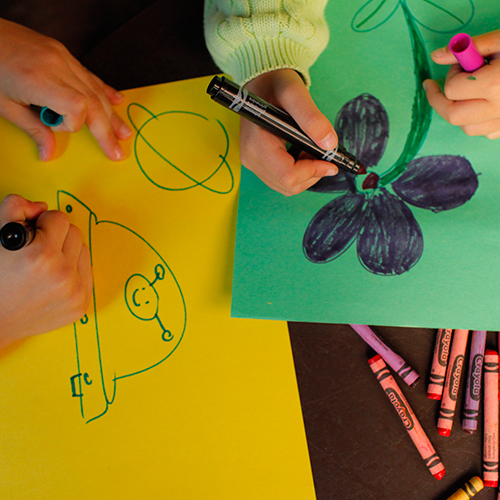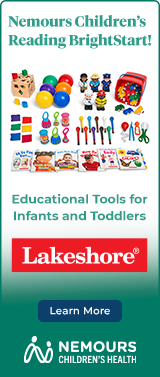One of the biggest predictors of your child’s success in school is what happens in the home. It is important to create a home environment in which you provide the following experiences on a daily basis:
- Encourage conversations.
- Practice listening skills.
- Read books aloud.
- Provide opportunities for drawing and writing.
- Acknowledge and praise all attempts at listening, speaking, reading and writing.
You are your child’s best role model. As your child watches you read and write for pleasure, work or your daily life, you provide an opportunity for her to imitate your behaviors. The following suggestions can help you create a rich environment where your child can observe, participate and develop the language and pre-reading skills he will need for the future.
- Provide space and opportunities for your child to engage in language and pre-reading experiences.
Be sure to take into account your child’s age and developmental level, and introduce additional materials when needed. Planning how you can incorporate language and pre-reading activities throughout your home and your day will be of great benefit. - Create a comfortable and cozy reading area.
Create a quiet reading area with a comfortable place to sit, good lighting and a shelf to display and store reading materials. Teach your child to respect books and to return them carefully to the shelf. - Provide a wide variety of reading materials.
Provide a variety of books for children that include board books, touch-and-feel books, alphabet and counting books, rhyming books, narrative stories, nonfiction informational books, award-winning books and chapter books. Include reading materials that adults use, such as cookbooks, magazines, newspapers, pamphlets and calendars. Help your child understand the varied purposes of reading and writing, such as enjoyment, to find recipes, to record events on the calendar, to communicate with others, and to learn facts and schedules. - Create a convenient and comfortable writing area.
Create an area to draw or write that includes a small table or desk and a wide variety of writing materials, such as:- crayons
- colored pencils
- markers
- unlined paper
- card stock
- dry erase markers & white board
- clipboard
- notepads
- journals
- chalk and chalkboard
- paintbrushes and easel
- magnetic drawing boards
- stencils
Encourage your child to use the writing area to draw a picture for you or someone else, write a thank you note for a gift, or create a get well card for a friend.
- Provide materials for exposure to the alphabet.
Provide lots of opportunities for your child to be exposed to letters of the alphabet in playful, yet meaningful, ways. Materials might include:- uppercase and lowercase magnetic letters
- a magnetic board
- foam letters
- alphabet cards
- alphabet blocks
- alphabet puzzles
- modeling clay or play dough
- letter stamps and stamp pad
- alphabet posters or charts
Let your child explore the materials independently, or make suggestions and guide her. Teach your child how to care for the materials and return them to where they belong.
- Include additional items for listening to stories, nursery rhymes or music. For example:
- CD player and music
- books on CD
- headphones
- computer with keyboard
- tablet or mobile devices
It is important to interact and support your child as much as possible while she uses these electronic devices.
- Provide props for role playing.
Encourage oral language development by providing props for role playing and dramatic play. You might consider providing:- dolls
- stuffed animals
- puppets
- cars and trucks
- toy people
- toy animals
- dress-up clothes
- costumes
- toy dishes
- pretend food
- empty containers with labels or logos (such as cereal boxes)
Join the fun and role play with your child!
- Consider the ways you can include language and pre-reading activities in a daily routine.
You might ask for your preschool child’s help as you prepare a grocery list for shopping. For example, ask him to help you list the vegetables you should get, and the fruit. He might even draw pictures for some items on the list, or write the first letter of their names, such as ‘t’ for tomatoes. As you prepare dinner, talk with your child about the food preparation and give her jobs to help you. Be sure to use culinary terms, such as, colander, ingredients, spatula, herbs, and spices. Include a bath book for your child as she takes a bath. Make story time a regular part of your bedtime routine. Think of as many ways as you can to make books, drawing and writing, and conversation a part of your everyday routines. - Bring language, reading and writing outside.
Take a blanket and books to look at or read when you go into your yard or a park. Give your child sidewalk chalk to draw shapes, pictures and letters on the sidewalk. Build your child’s vocabulary and oral language by talking with him about the environment. - Find inexpensive ways to provide a wide variety of books in the home.
Remember to use the library, go to yard sales, or ask friends or relatives with children who have outgrown these items to help you prepare your language- and reading-rich home.









